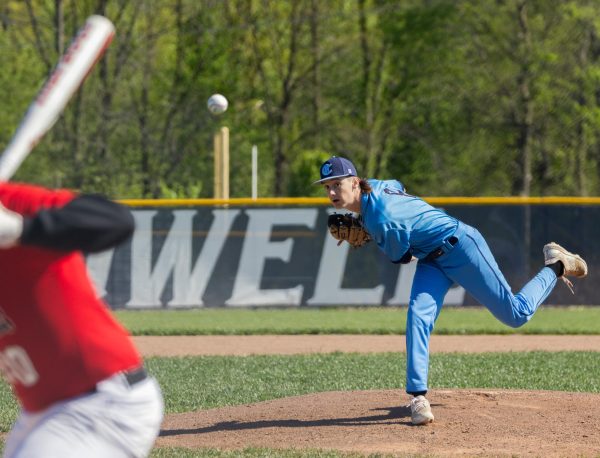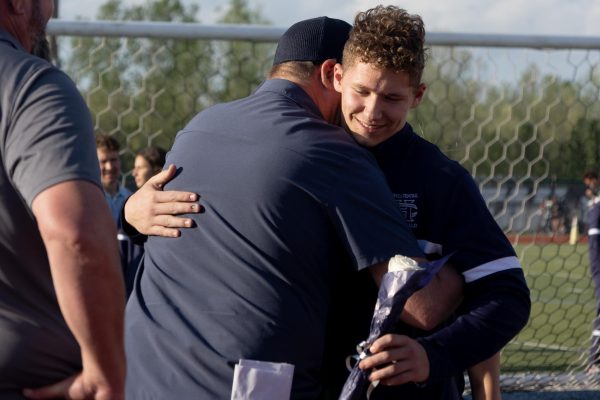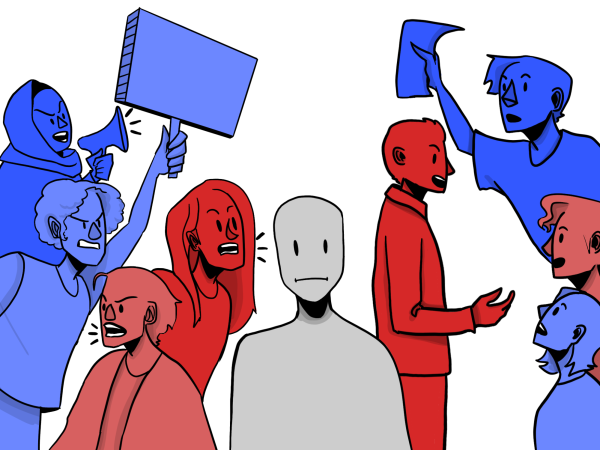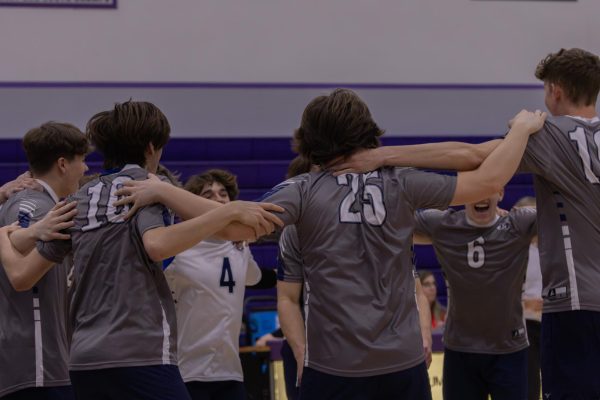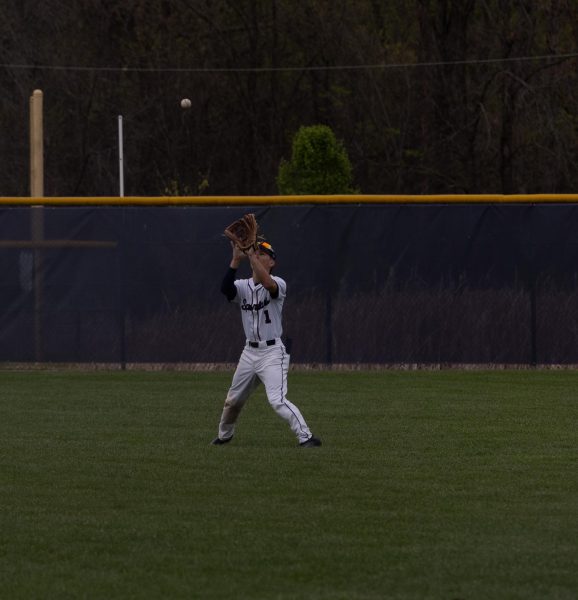They’re Smart, They’ll Be Fine
Exposing the flaws in the way our education system handles “giftedness”
A very young girl reads the dictionary. SEGA students cover more curriculum in less time, isolating them from their peers.
There’s no doubt that the education system is imperfect: providing for the individual needs of thousands of children is simply not possible. That’s why the system includes solutions for children who have particular needs, whether due to disability or exceptional ability. Yet these solutions are never perfect either.
Students who score at a very high percentile on an IQ test are identified as being “exceptionally gifted” and invited to join a program called SEGA, short for Students with Exceptional Gifted Abilities. The program starts in second grade, but students can also test into it in subsequent years. Within this program, students learn curriculum at a faster pace. The end product is that most SEGA students enter sixth grade taking core classes at a seventh-grade level, despite being officially sixth-graders.
The actual structure of the classroom is different from typical elementary school classrooms. For one, the program brings students from across the school district together into one class at one elementary school. This school has been Castlio Elementary since the 2012-13 school year, and was Central Elementary prior to that. Students who test into the program must make the decision to move schools to participate in the program. Additionally, the number of students in the classroom is drastically lower. Because there is an objective standard of acceptance, some years see only three or four students test into the program. While more often join the program in later school years, this is not guaranteed.
The only interactions SEGA students have with the other classrooms in their grade take place during specials (music, PE, and art), recess, and lunch. This presents issues for socialization, a very important factor to the elementary school experience. While kids can often adjust to moving schools with no problem, this is much harder when you have only four classmates instead of 24. You learn to rely on those you’re around, especially when the kids in the other classrooms don’t appreciate your academic situation.
I was one of the students that moved from Central Elementary to Castlio Elementary when the program relocated in 2012. I had been in second grade when I tested in, started attending Central for one year, and then was moved to Castlio. The idea of moving schools yet again was daunting to me, but I got the feeling that the general consensus on this issue was “these kids are smart; they’ll be fine.”
The issue with this assumption is that gifted children are not necessarily better at socializing simply because their academic abilities have been identified as exceptional. In fact, studies have shown that highly gifted students, such as SEGA students, tend to be more likely to have poor relationships with many of their peers. This is further stunted by the structure of the program, where kids spend almost the entire day with the same several kids, every day, for four years straight. Such a configuration likely wouldn’t even go well in a classroom of social butterflies.
The SEGA program is not talked about much. Most people who know of it only know because they were in it, knew someone in it, or attended the elementary school it was based at. Even then, SEGA students are often an afterthought. They are assigned “partner classrooms”, normal classrooms that they’re considered part of for things like specials or lunch, essentially enough time for them to attempt to socialize with their partner class peers, yet not enough to feel actually welcome in the classroom.
At Castlio, there wasn’t enough desk space to accommodate SEGA students in partner classrooms, so indoor recesses were spent on the floor trying not to get stepped on. We weren’t assigned numbers in partner classrooms, usually having to stick ourselves on the end of the line as the teacher said, “oh, whoops, I forgot.” While this makes some practical sense because SEGA students are barely members of the class, it means the majority of the people they see in day-to-day life will generally regard them as not really welcome. Having just moved to a new school and immediately realizing your place is on the floor and your teacher was not expecting to have to allow you into her classroom is certainly off-putting.
These flaws within the program, however, are not all for nothing: the academic structure of the program is greatly beneficial to its students. By sixth grade, students have “skipped a grade” in core classes without ever having to actually skip any grade — they still cover the material; they just cover it faster. However, there’s no denying that social factors matter just as much to a student’s development as academic ones do, if not more. Students who are already more likely to have poorer social interaction than average can be greatly harmed by an environment in which they do not feel welcome. The SEGA classroom itself is often tightly-knit thanks to the fact that students often really only have each other. No one else understands.
This tightly-knit bubble, while a decently functional safe space from the scary unknown, isn’t necessarily a good thing. The Francis Howell School District website claims that “participation in the SEGA program allows students to achieve at a level compatible with their abilities and interests while maintaining interaction with an appropriate peer group.” Whether or not this is true all comes down to the definition of an “appropriate peer group.” Is the intention for gifted kids to have the same three to six peers for four years straight? How do they develop social skills? Those get rusty when the last time you had to actually go out and make friends was when you were five or six.
All students benefit from a diversity of people around them, including a diversity of academic ability. The structure of the SEGA program makes this almost impossible. For five hours of the day, these “exceptionally gifted” students can only talk to other “exceptionally gifted” students, and for the remaining two hours, they’re in a classroom where the teacher forgot they existed and where the students view them as “others.” A teacher not being properly prepared to include these students in the classroom can result in students who don’t care to include these students in the classroom. In the real world, people aren’t segregated by IQ test score.
Sixth grade can be extremely jolting for SEGA students. The program is effectively over now. They join the seventh-graders in Pre-Algebra, Life Science, and Ancient Civilizations, in a group of kids who have been in normal classrooms the whole time. This is quite the adjustment for anyone who hasn’t felt completely welcome in a normal classroom since the first grade. This is amplified by the fact that in order to take higher-grade-level classes, SEGA students must attend Saeger Middle School, as the location of the school makes it possible to take ninth-grade courses across the parking lot at FHC their eighth-grade year. This also means an entirely new group of peers to adjust to, as Saeger feeds from completely different elementary schools. For me, this was the third time having to meet an entire new school of people, solely because of SEGA.
How do they develop social skills? Those get rusty when the last time you had to actually go out and make friends was when you were five or six.
So what, then, is the solution? How can the school district devise a way to advance gifted students and still give them some semblance of a normal classroom experience? An adjustment to class sizing may be the answer. In a recent year, one fifth-grade SEGA classroom graduated with only three kids in the class. In another, there were fourteen. It’s not impossible for more students to test into the program without sacrificing anything. If the results of the tests (already proven to not be a perfect predictor of intelligence) come back with not enough students having met the threshold, why not simply include more students? Instead of choosing a random amount of kids out of the grade based on a threshold that seems arbitrary, why not just accept, say, the 25 highest-scoring kids in the grade? This would form a normal-sized classroom. With 25 kids, there is no need for “partner classrooms.” The SEGA classroom can function within the school just as a normal classroom does, just learning accelerated content. There is no need to awkwardly attempt to engage with students who feel you’re a threat to their normal classroom functioning; you’re in a different class entirely. You’re socially no different to them than any other student in the same grade who just has a different teacher. And while you may have the same 24 classmates every year, at least it isn’t just the same four.
Your donation will support the student journalists of Francis Howell Central High School. Your contribution will allow us to purchase equipment and cover our annual website hosting costs. FHCToday.com and our subsequent publications are dedicated to the students by the students. We hope you consider donating to allow us to continue our mission of a connected and well-informed student body.




